Photos: Take a Tour of Crater Lake National Park's Natural Wonders
Blue and beautiful
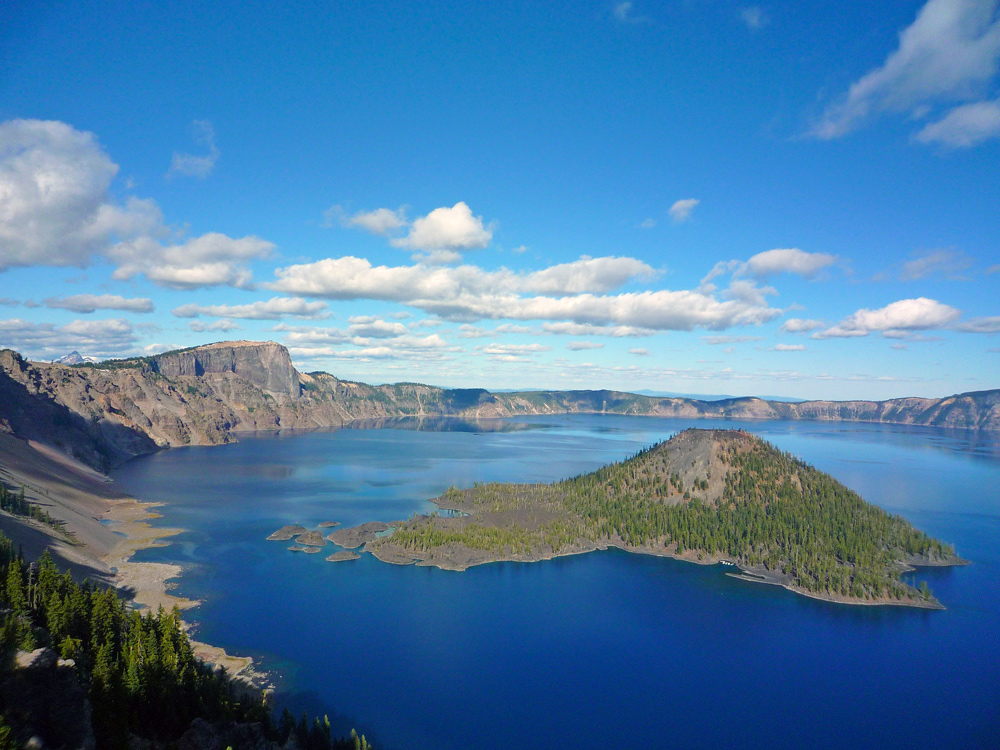
Crater Lake is a caldera lake and is one of the most spectacular natural wonders of North America. Located in south-central Oregon, Crater Lake is a part of the Cascade Mountain range volcanic arc. It is considered a sacred site by the aboriginal Klamath people. Crater Lake was first seen by a non-Native American in June 1853, when gold prospector John Wesley Hillman came upon it and gave it the name "Deep Blue Lake."
Water and woods
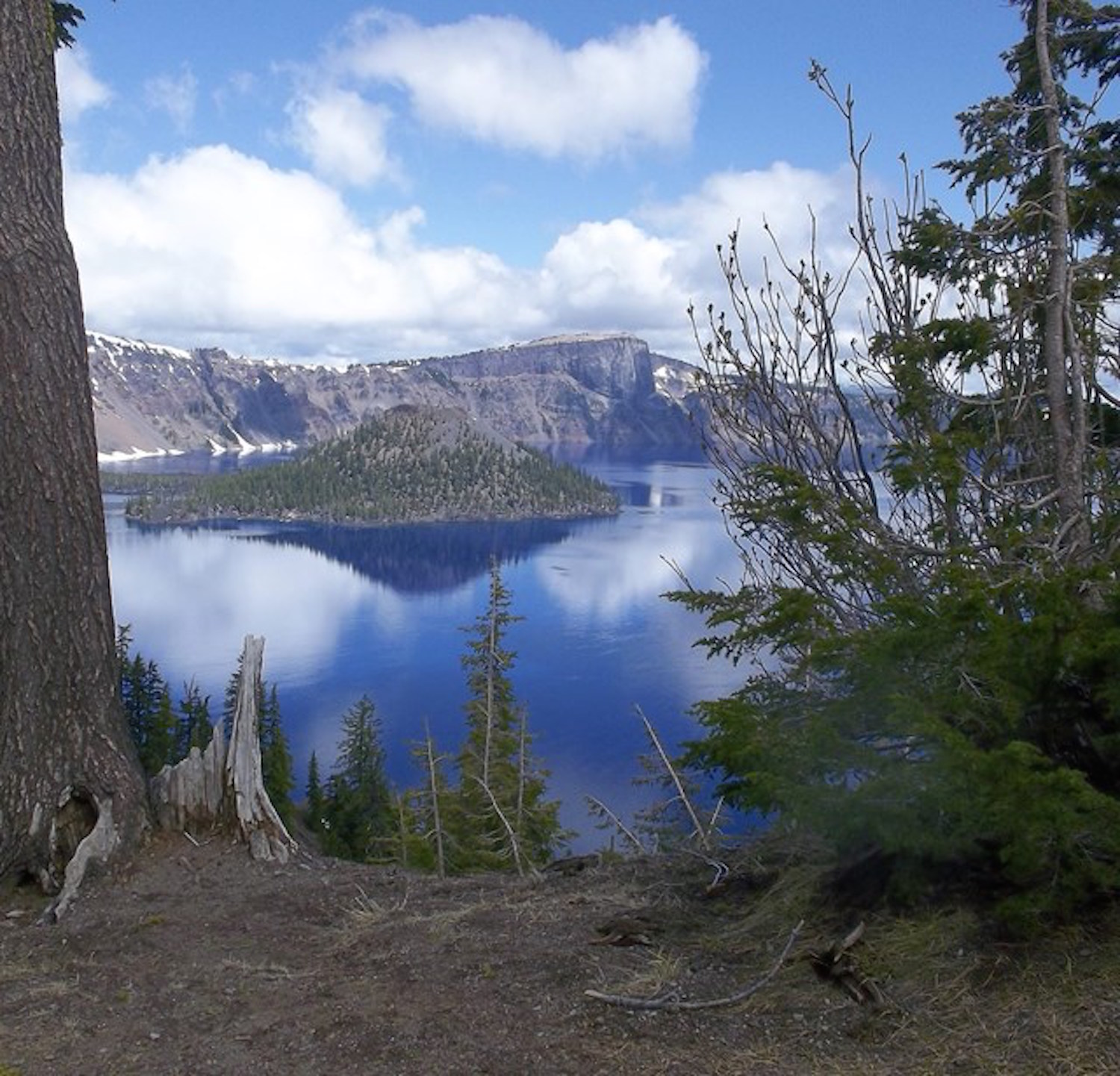
At a maximum depth of 1,943 feet (592 meters), Crater Lake is the deepest lake in the United States, and the second deepest lake in the Western Hemisphere. It also ranks are the seventh deepest lake in the world. The average depth of the lake is 1,148 feet (350 m). Since there are no running rivers or streams that enter Crater Lake, all the water is the result of rain and snowfall.
Rock overlook
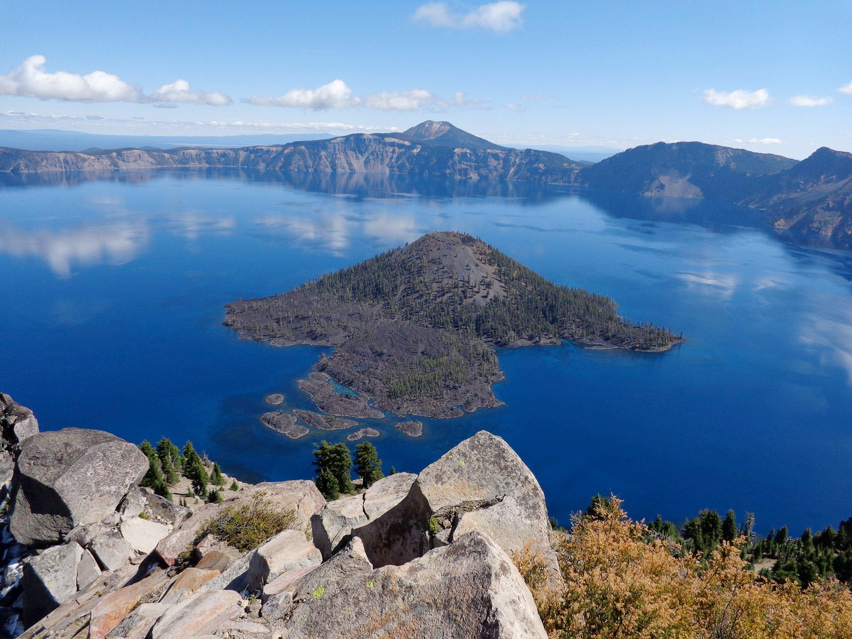
At an elevation of 6,173 feet (1,881 m), Crater Lake receives an average rainfall of 66 inches (168 centimeters) and an average snowfall of 44 feet (13 m). The lake's water level remains amazingly constant through the many cycles of precipitation, evaporation and seepage. The lack of inflowing sediment-laden water from any source explains why the water of Crater Lake is so crystal clear and vibrant blue in color.
In the beginning
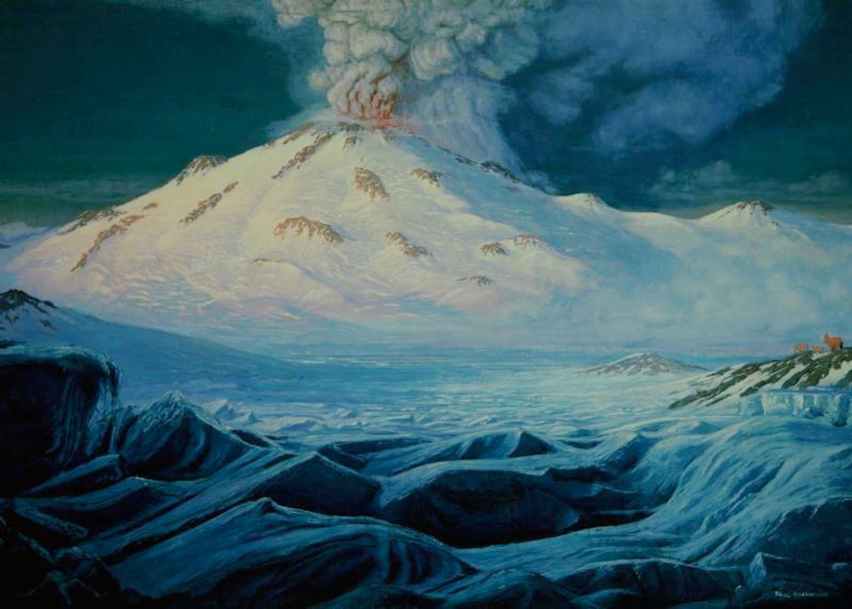
The story of the genesis of Crater Lake began some 500,000 years ago, when the 12,000-foot-tall (3,700 m) shield volcano called Mount Mazama formed on an edge of the Pacific Ocean's Ring of Fire. Many such volcanos were forming as a result of the Pacific Plate being forced slowly below the North American Plate, creating a series of high mountain ranges, frequent earthquakes and a chain of active volcanoes.
Ancient eruption
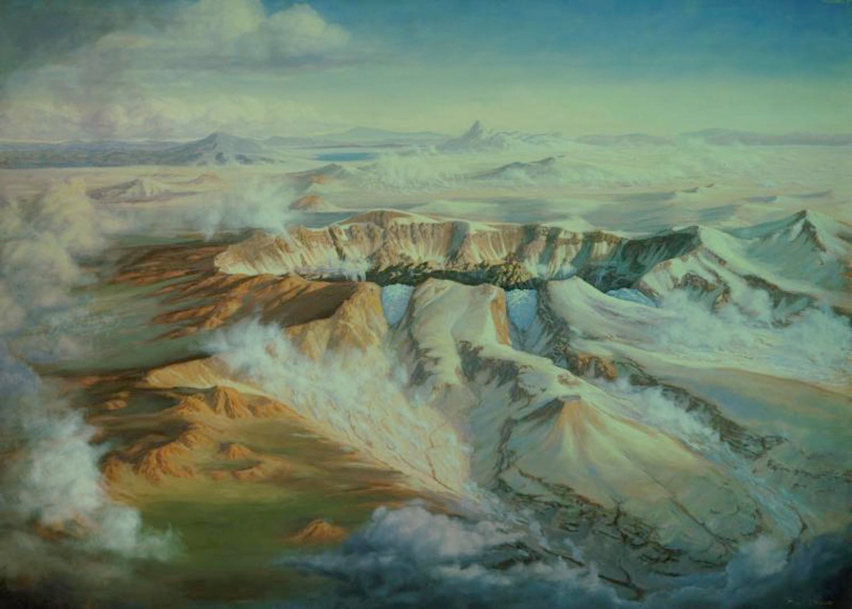
About 7,700 years ago, Mount Mazama erupted, expelling magma as pyroclastic materials like rhyodacite pumice and fine ash destroyed life over an area of thousands of square miles. A second eruption soon followed, resulting in the collapse of the volcanic mountain into its center, forming what would become the Crater Lake caldera. This caldera was 5 to 6 miles (8 to 9.6 km) in diameter and had an original depth of 3,900 feet (1,189 m). Over the years, volcanic materials have been falling into the caldera from the collapsing walls, meaning the caldera is not as deep as it once was.
Fifth oldest national park
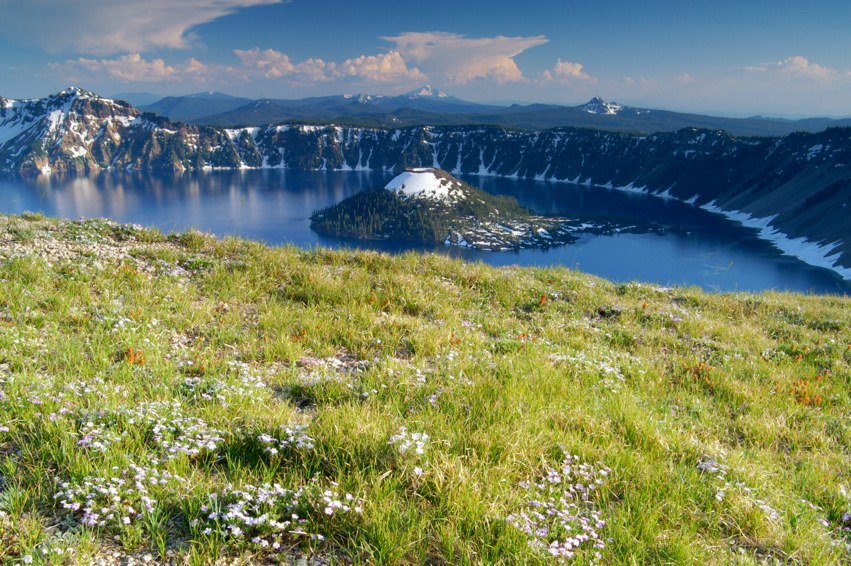
Crater Lake became a national park on May 22, 1902, making it the fifth oldest national park in the United States. It is the only national park in the State of Oregon. At an elevation of 6,475 feet (1,974 m), the park has two main seasons: a long, cold, windy and snowy winter and a short, wildflower-filled summer. Despite the long, cold winters, Crater Lake itself seldom freezes over. Heat from the summer is stored in the deep lake waters and the stirring of the surface by the constant winds keeps the lake's winter temperature just above freezing. The last time the lake actually froze over completely was in 1949.
Colorful beauty
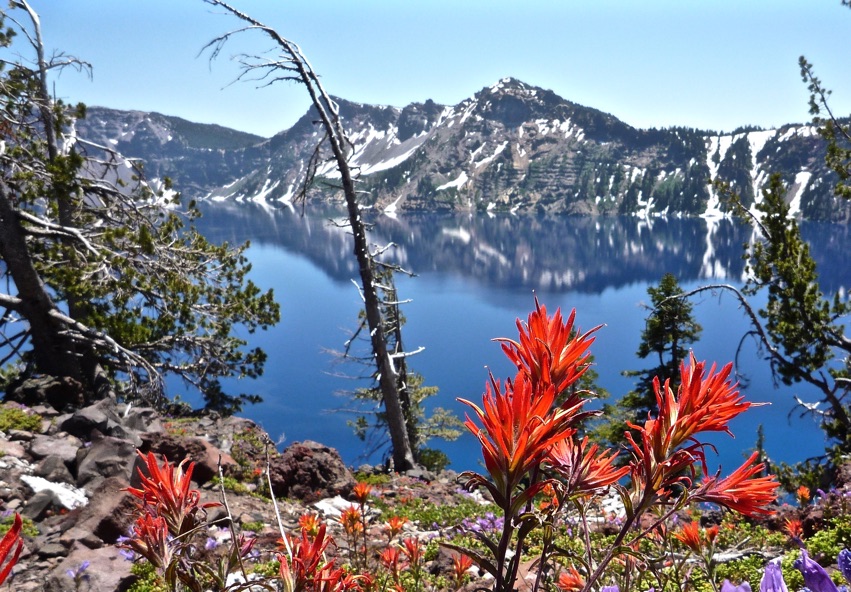
When summer finally arrives each June, an explosion of wildflowers occur around the lake and surrounding meadows. Seeds must be produced and scattered before the snows arrive again in September. Crater Lake National Park has about 400 species of colorful blooming plants growing within the park's boundaries. Here, the beautiful wavy-leaved Indian paintbrush, Castilleja applegatei, grows in the rocky volcanic soil surrounding Crater Lake.
Sign up for the Live Science daily newsletter now
Get the world’s most fascinating discoveries delivered straight to your inbox.
Tall trees
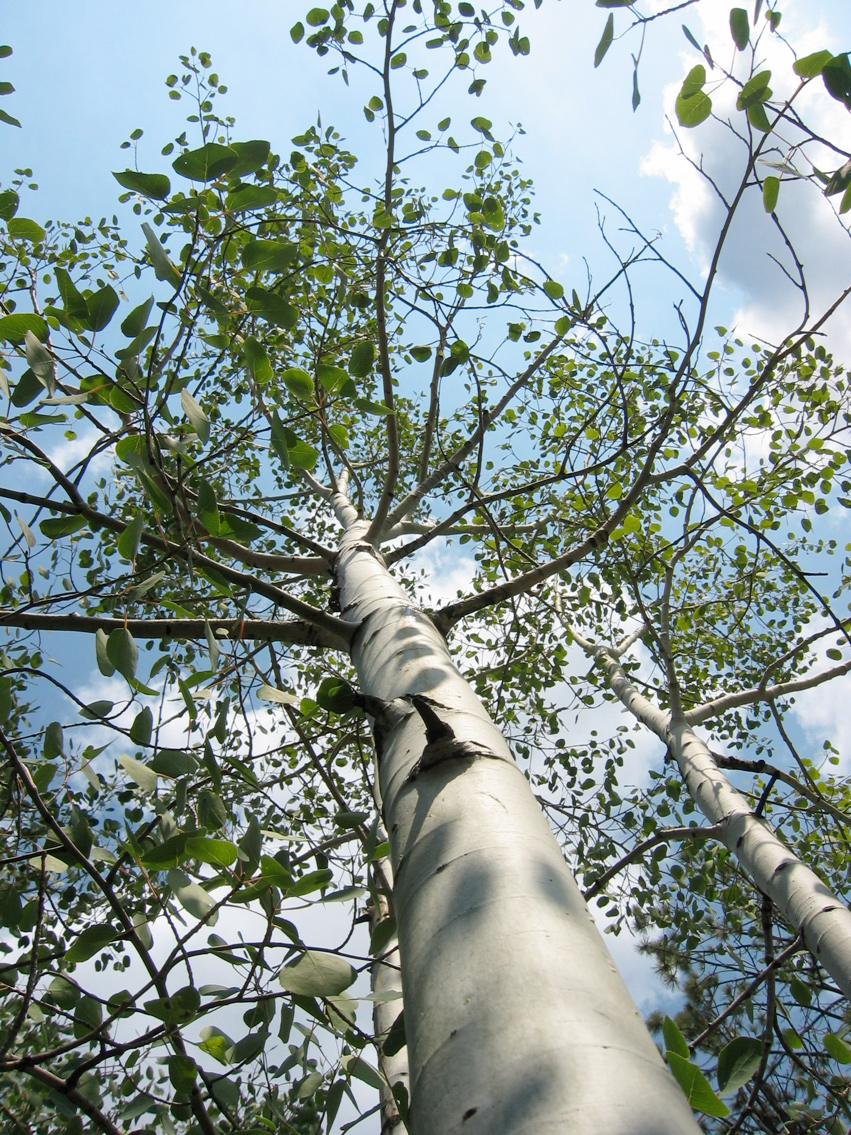
A wide variety of trees can be found within Crater Lake National Park, but each species is located in fairly well-defined zones determined by temperature, altitude and moisture. The lower, northeastern elevations are dominated by western yellow pine while on the western slopes, scrubby oaks and small Douglas fir prevail. Forest of Quaking aspen, Populus tremuloides, (shown here) can be found in the southern regions of the park.
Pine trees
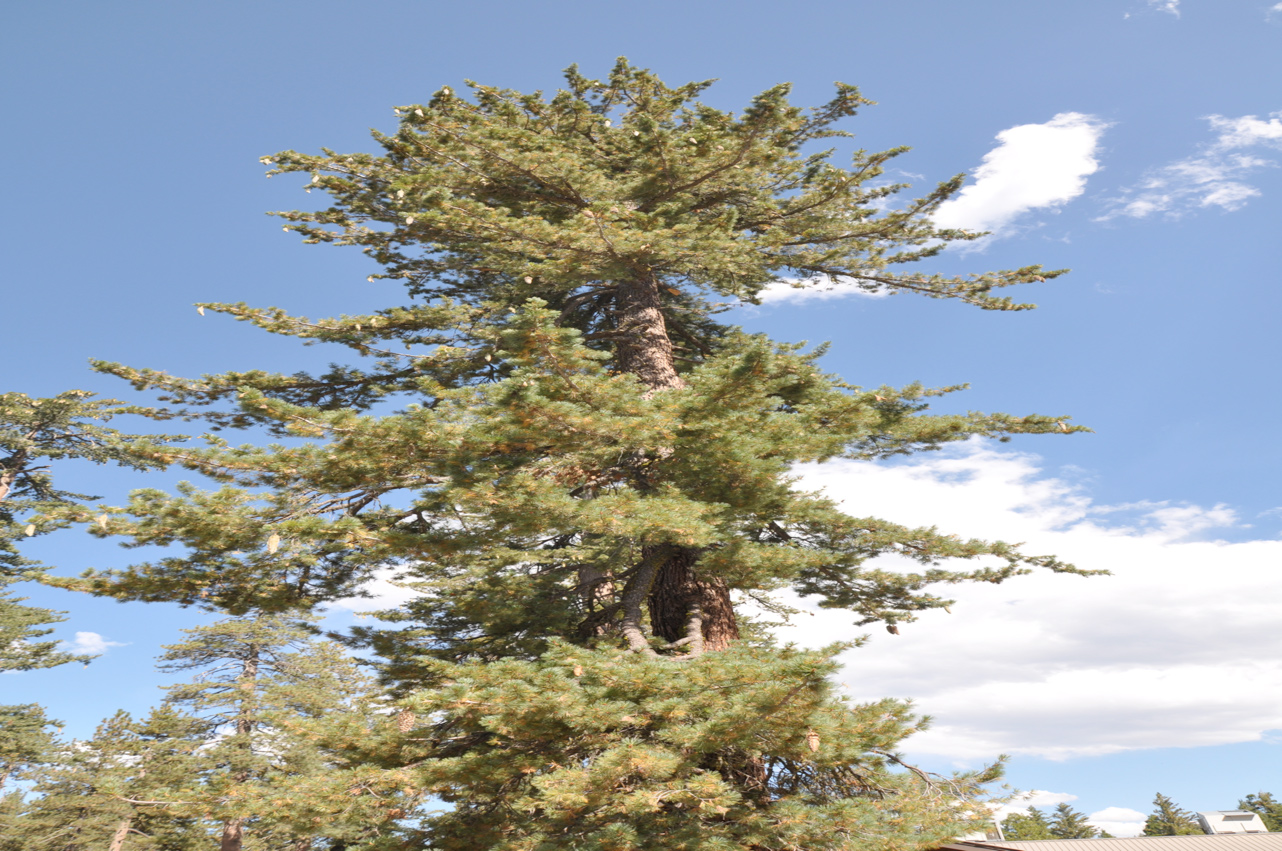
Sugar pine, Pinus lambertiana, (shown here) are the tallest of all the pine trees found in the Crater Lake region. They can grow upwards of 200 feet (60 m) and are easily identified by the very large pine cones that can develop to be more than 1 foot (30 cm) long. Other common conifers include the ponderosa pine, Pinus ponderosa, Western hemlock, Tsuga hetero-phylla, White fir, Abies councilor and the Engelmann spruce, Picea engelmannii.
Wildlife
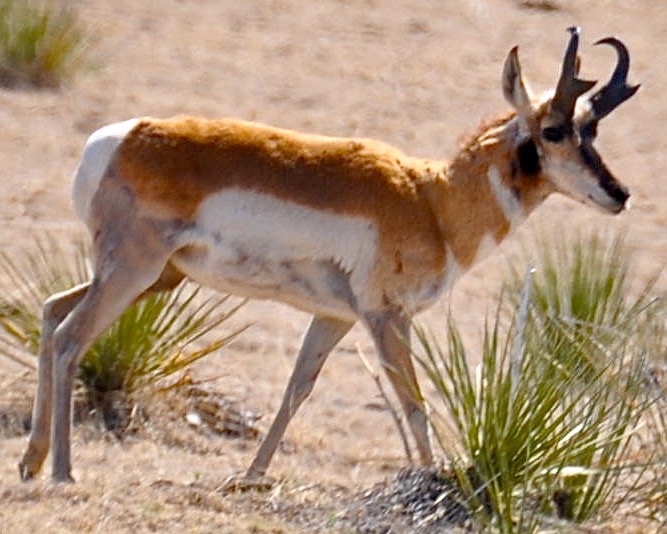
A wide variety of animal species make their home at Crater Lake. The clear blue lake had no native species of fish. Only the introduced rainbow trout, Oncorhynchus mykiss, and the landlocked kokanee salmon, Oncorhynchus nerka, have been able to successfully adapt to the lake environment. More than 24 species of mammals, including a small herd of pronghorn, Antilocapra americana, (shown here) have been present in the lake area since the first biological survey was completed in 1896.
Volcanic islands
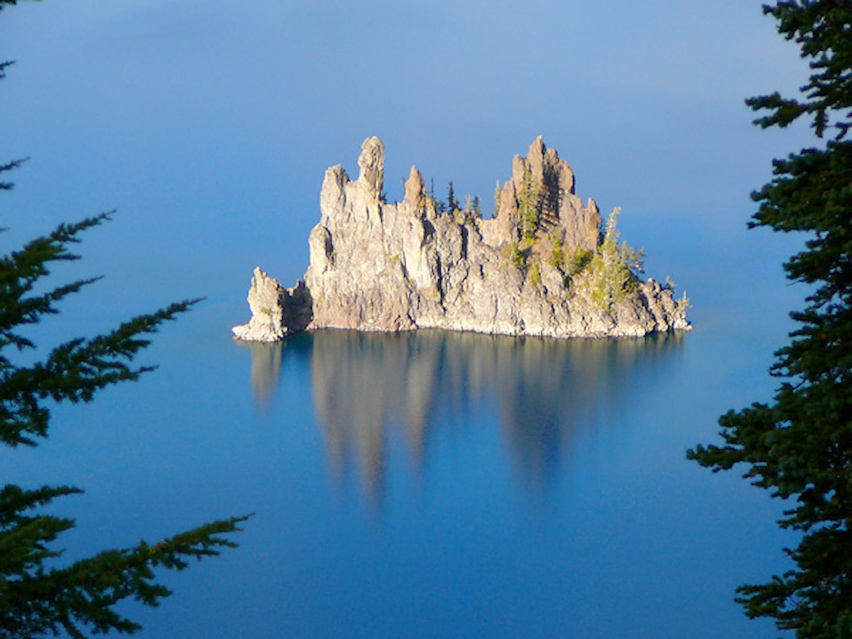
Several volcanic islands are found within the waters of Crater Lake. Shown here is the island known as Phantom Ship, the 400,000-year-old remains of a volcanic dike. The rugged peaks of Phantom Ship are as tall as a 16-story building, but when viewed within the grandeur of Crater Lake, the island resembles a small toy sailboat. The clear, mirror-like water allows light to play many illusions on Crater Lake and often the island seems to appear then disappear (giving rise to the name Phantom Ship) as light and shadows cross the lake.









